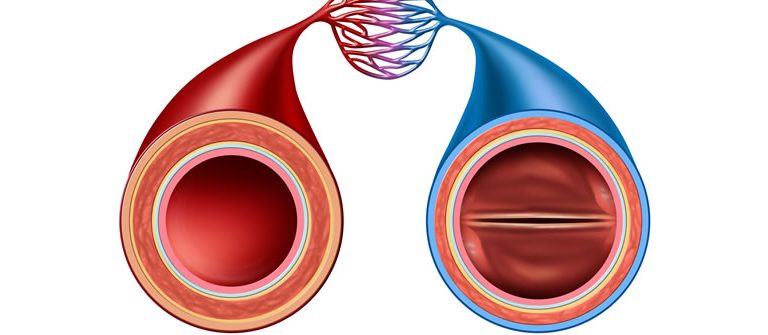Deep Vein Thrombosis
Deep Vein Thrombosis (DVT) is a condition that occurs when a blood clot forms in the veins located
deep inside the body. This clot blocks the vein and as a result the blood flow to this affected part is also
blocked. Typically, it occurs in thigh or leg (usually one side) but can also occur in other parts of the
body. According to statistics around 60,000-100,000 people die each year due to DVT/PE in the United
States. (1)(2)
Fig. 1 – Deep Vein Thrombosis
Symptoms
DVT is characterized by symptoms like:
- Swelling of the extremities
- Unexplained Pain
- Warm skin area as compared to other parts
- Redness around the affected area. (3)
- Sometimes DVT occurs without any symptom. If sign and symptoms of DVT appear, a medical doctor
- should be contacted immediately.
Risk Factors
The risk factors for DVT are:
- Age; with an increased risk after 40 years
- Certain medication like use of birth control pills and Hormone Replacement Therapy (HRT)
- Pregnancy- as blood clots easily during pregnancy
- Obesity
- Certain diseases and their treatments like cancer (chemotherapy), heart failure, injury, Kidney
disease - Family history of DVT
- Immobility especially after surgery and sitting for longer durations for e.g. when traveling via
plane, car or train (4)
Diagnosis of DVT
DVT can be diagnosed by using specialized tests. The most common method used to detect DVT is a D-
dimer blood test. This test measures a substance released in the blood when the clots break up.
However, the use of D-dimer test in elderly patients has not been widely recognized.
Ultrasound scan is used as a standard imaging test. Sound waves in the ultrasound are used to produce
the image of the veins so that the doctor can see the blood flow. The flow of blood is disturbed or slow
when a clot is present. (4)
Vein Treatment options
Medication
Blood thinning agents is usually the first choice of therapy for acute Deep Vein Thrombosis. Heparin is a
frequent blood thinning agent usually given to the patients who are hospitalized. The use of blood
thinning agents is associated with a risk of bleeding and therefore, patients should be carefully
monitored.
Thrombolysis
Patients who do not respond to blood thinning agents are then treated with thrombolytic medication
such as streptokinase which breaks down the clots (5) .
Filters
Filters placed in the large abdominal vein (vena cava) are also a choice of treatment in those patients for
whom blood thinning medication is not advised. Hence, the choice of treatment therapy may vary from
case to case. (3)
Complications
Pulmonary embolism
The most common complication of DVT is Pulmonary embolism (PE). It occurs when the blood clot from
the deep vein moves to the lungs and blocks the blood vessels. Patient develops difficulty in breathing,
chest pain, irregular heartbeat and coughing up blood. PE is a medical emergency and should be
handled immediately. (6)
Post thrombotic syndrome
Another complication of DVT is Post thrombotic syndrome. In this state the valves in the veins are
affected by the clotting resulting in high pressure in the veins. Symptoms include swelling, itching,
discoloration and ulcer formation of the affected area (7) .
Recurrence
DVT is a chronic condition and one third of the patients have recurrence after the first event. Old age
and obesity are associated with highest recurrence. (8)
Prevention of DVT
- Lifestyle measures like regular exercise, maintaining healthy weight and quitting to smoke play
an important role in the prevention of DVT. - The use of compression stockings especially in hospital admitted patients greatly reduces the
risk of DVT. Women at risk of developing DVT who need to have a surgery should stop using
birth control pills before admission to the hospital. - During long distance journeys by train car or plane, exercise at regular intervals like moving legs
and foot and use of compression stockings is advised. - Intermittent pneumatic compressions are also used in inpatients to prevent DVT. (9, 10)
References
1. Data and Statistics on Venous Thromboembolism.
2. Deep vein thrombosis.
3. Streiff MB, Agnelli G, Connors JM, Crowther M, Eichinger S, Lopes R, et al. Guidance for the
treatment of deep vein thrombosis and pulmonary embolism. Journal of thrombosis and thrombolysis.
2016;41(1):32-67.
4. Xing F, Li L, Long Y, Xiang Z. Admission prevalence of deep vein thrombosis in elderly Chinese
patients with hip fracture and a new predictor based on risk factors for thrombosis screening. BMC
musculoskeletal disorders. 2018;19(1):444.
5. Vedantham S, Piazza G, Sista AK, Goldenberg NA. Guidance for the use of thrombolytic therapy
for the treatment of venous thromboembolism. Journal of thrombosis and thrombolysis. 2016;41(1):68-
80.
6. InformedHealth.org [Internet]. Cologne GIfQaEiHCI. Deep vein thombosis (DVT: Overview. 2006.
7. Galanaud JP, Monreal M, Kahn SR. Epidemiology of the post-thrombotic syndrome. Thromb Res.
2018;164:100-9.
8. Cushman M, editor Epidemiology and risk factors for venous thrombosis. Seminars in
hematology; 2007: Elsevier.
9. Badireddy M, Mudipalli VR. Deep Venous Thrombosis (DVT) Prophylaxis. StatPearls. Treasure
Island (FL)2019.
10. Galson SK. Prevention of deep vein thrombosis and pulmonary embolism. Public Health Rep.
2008;123(4):420-1.
For more articles about health from My Zeo, check out all our tips and posts here!

Leave a Reply